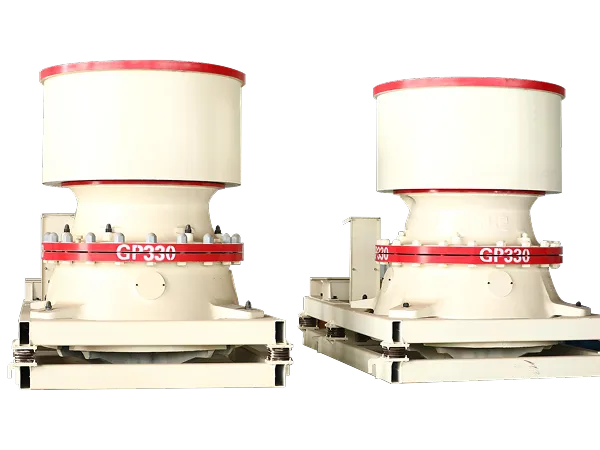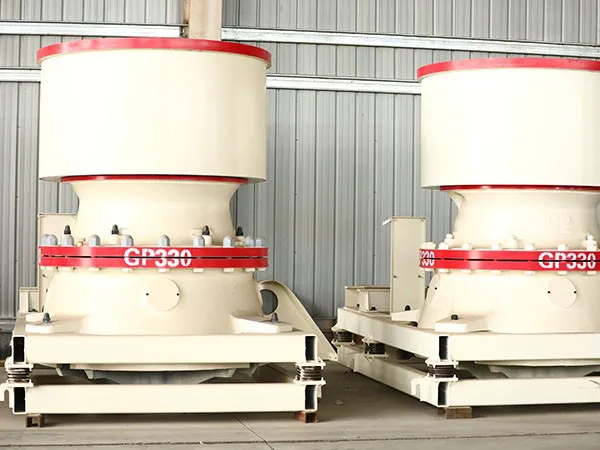Cone crusher liner wear is a significant operational cost in the mining and aggregates industries. It's influenced by a complex interplay of factors related to the material being crushed, the crusher's operation, and the properties of the liners themselves.

Hardness and Abrasiveness: The harder and more abrasive the rock, the faster the liners will wear. Materials with high quartz content are particularly abrasive.
Particle Shape: Highly angular particles tend to cause higher wear due to increased friction and gouging.
Size Distribution of Feed:
Too small feed for the cavity: This can lead to excessive wear at the bottom of the liners as material grinds against them.
Too large or too coarse feed: This speeds up wear at the top of the liners and can cause abnormal wear patterns.
Poorly graded or segregated feed: Uneven distribution of material (e.g., large material on one side, small on the other) causes uneven wear, leading to premature replacement of liners even if parts are still good. Fines in the feed can also act like sandblasting, accelerating wear.
Moisture Content: High moisture content can affect the crushing process and potentially influence wear, sometimes causing clogging or slippage.
Abrasion: This is the primary wear mechanism in cone crushers. As rock material is squeezed and compressed between the mantle and concave, there's significant relative sliding and grinding action, which scrapes away material from the liner surfaces.
Impact: While cone crushers are primarily compression crushers, impact forces are still present, especially with larger feed material. The repeated impact of rocks against the liners contributes to wear.
Compression Pressure: The pressure exerted on the liners during crushing is a key factor in wear. Higher compression ratios and finer particle size distributions generally lead to higher pressures and more serious liner wear.
Fretting Corrosion: This occurs at the contact surfaces between the liners and the cone support, especially with small relative displacements. It involves mechanical-corrosive wear, leading to rubbing, adhesions, and cavities filled with wear products.
Feeding Conditions:
Poor feeding: This is the number one issue affecting liner life, potentially reducing it by up to 70%. It leads to uneven wear, ring bounce, and poor particle shape.
Choke feeding: In many cases, choke feeding (keeping the chamber full of material) helps to optimize liner life by promoting rock-on-rock crushing, which reduces direct rock-to-metal contact and minimizes air pockets.
Off-centered feed: This directs most of the feed to one side, causing uneven wear.
Crusher Settings:
Closed Side Setting (CSS): An incorrectly set CSS can significantly impact wear patterns and overall crusher performance.
Crusher Load: Operating the crusher under optimal loading conditions (neither too full nor too empty) is crucial. Overloading or underloading can increase stress and wear.
Crusher Speed (RPM) and Stroke: Higher speeds can lead to faster processing but may also increase wear rates due to more frequent rock-liner interactions. The stroke (distance the mantle moves) also affects the crushing action and wear.
Maintenance and Inspection: Neglecting regular inspections and timely replacement of worn parts can lead to structural damage to the crusher and increased downtime. Proper lubrication and cooling are also vital for longevity.
Foreign Material: Non-crushable tramp material entering the crushing chamber can cause severe damage and wear to liners.

Material of Construction: The type of alloy used for the liners significantly affects their durability and wear resistance. High-quality alloys, especially various grades of austenitic manganese steel, are commonly used due to their work-hardening capabilities. Materials with higher manganese content (e.g., 18-21%) are chosen for more abrasive applications, while lower manganese (e.g., 14%) may suffice for softer materials.
Crushing Chamber Design (Mantle and Concave Profile): The geometry and fit between the mantle and concave are critical. An unsuitable liner profile can lead to excessive wear, low efficiency, and even mechanical damage. Proper design ensures even wear patterns and optimal crushing.
Manufacturing Quality: Defects in the liner casting or improper installation can also contribute to premature wear.
By understanding these factors, operators can implement strategies such as optimizing feeding, selecting appropriate liner materials and profiles, and maintaining the crusher diligently to extend liner lifespan and reduce operational costs.
Advanced Eco-Friendly Impact Crushers: Optimizing Industrial Efficiency and Sustainability
2025-11-24 02:27Impact Crusher vs Jaw Crusher: Key Differences, Applications & Efficiency Guide
2025-11-19 03:12Impact Crusher Maintenance Guide: Tips to Maximize Efficiency and Extend Lifespan
2025-11-15 05:38Impact Crusher Wear Parts Replacement: Boost Performance, Extend Lifespan, and Minimize Downtime
2025-11-08 16:16Address: Luoyang Luoxin Industrial Park, Henan,China
E-mail: sales@yd-crusher.com
Phone: 86-139-3993-0123

Yude
Mechanical
Create the greatest value for customers
Provide the best quality products and services
86-139-3993-0123
sales@yd-crusher.com
Luoyang Luoxin Industrial Park, Henan,China